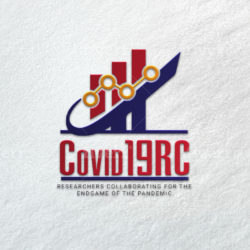by Augustina Baker of TechWarn.com (USA)
The past few months have put the world on a red alert.
Almost all countries have been hit with cases of the novel coronavirus. A sense of panic spread as the daily numbers grew exponentially for a short period.
Right now, governments and healthcare workers are more on top of things. With that, though, the curve is not yet flattened.
That has birthed different concepts of how to eradicate the virus, one of which is the contact tracing apps.
The Tech Behind Contact Tracing Apps
Contract tracing apps are used to trace contacts digitally. What contacts, though?
Manual contact tracing has long been established as an evidence-based approach to defeating the spread of infectious diseases. The COVID-19 is not the first global outbreak, which has given the healthcare sector the time and practical experience to perfect manual contact tracing.
Under this program, healthcare workers seek to identify those that might have come in contact with a confirmed infected case so that they can be isolated.
The diseases that require such measures are highly infectious ones. If the contacts are not moving, they won’t be infecting others. When they aren’t infecting others, the numbers keep going down.
While areas like California, New York, and Massachusetts have thrown a lot of manpower behind manual contact tracing, a majority of regional and national administrations may be waiting on digital contact tracing to get the job done.
That is where these apps come in.
Using the Bluetooth and GPS function on smartphones, healthcare officers can identify those that a positive contact has been around in the recent past. All smartphones with these apps on them will interact with one another in the background, storing data that allows them to be used to map one another later. Should one of the smartphones belong to an infected person, it is used to identify all other smartphones that might have been in the same areas as this infected person.
The course of action from here could be to send a message to such contacts to observe self-isolation for 14 days to be sure they do not have the virus already. An alternate course of action would be the evacuation of said persons by healthcare officials to designated isolation centers where they could be better monitored.
The Flaws of Contact Tracing Apps
However, with exposed backdoors in hardware and the increasingly commonplace nature of facial recognition systems, people have lost trust in government’s use of surveillance technologies over the years.
An ExpressVPN survey on contact tracing apps shows that more than 80% of the American adult population are positive that the government will tap into the data generated by these apps. Not even the promise from Apple and Google that the data will be locally stored on user’s phones is dissuading that thought.
The problem with this mindset is that the adoption rate of the app is affected. For digital contact tracing to work, about 80% of all smart phone users need to download and use the app. Take out the numbers that do not trust the government and big tech companies, and the adoption rate drops well below the required threshold. Even Singapore, which has had a head start on this project, has yet to attain a 30% adoption rate.
Say government intrusion and privacy were no issues. The numbers still do not account for people in rural areas, and those who do not have smartphones. After all, to get those apps means using an Android or iOS device. Even for those who have one, it would have to be a relatively new unit so that it is up to the task.
Final Word
This is not the time to throw all our weight behind an untested system, which the public is not warming up to. There needs to be more time for testing, integration with the public, and reinforcement of privacy-focused promises. Else, contact tracing apps will just become another lofty idea.
